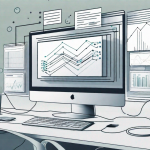If you’re a website owner or online content creator, you know that monetizing your platform is key to sustaining your digital empire. One essential metric in the world of online advertising is Revenue per Mille (RPM). In this article, we’ll take a deep dive into understanding RPM, its impact on your earnings, and strategies for maximizing this crucial revenue stream. So, buckle up and get ready to boost your digital bank account!

Understanding the Concept of Revenue per Mille
Let’s start by unpacking the basics of RPM. Revenue per Mille is a metric that measures how much money you earn for every thousand ad impressions on your website. Simply put, it’s the moolah you rake in for each set of eyeballs that glance at those shiny ads you’ve carefully placed.
Calculating RPM is as easy as pie! Just divide your total earnings by the number of ad impressions, multiply it by a thousand, and voilà! You’ll have your RPM in cold, hard cash.
But what does RPM really mean for your website’s business potential? Let’s dive deeper into the basics of RPM to understand its significance.
The Basics of RPM
RPM is not just any old metric. It’s an accurate indicator of your website’s business potential. It takes into account various factors such as ad layout, traffic volume, and the value of your ads. By analyzing these factors, RPM provides insights into how effectively you are monetizing your website’s traffic.
Imagine you have two websites with the same amount of traffic. However, Website A has a higher RPM than Website B. This means that for every thousand ad impressions, Website A generates more revenue than Website B. This indicates that Website A has a better ad layout, higher-value ads, or a combination of both, resulting in a more profitable website.
Mastering the art of maximizing RPM is crucial for digital success. By optimizing your ad layout, attracting high-quality traffic, and partnering with advertisers who offer valuable ads, you can increase your RPM and boost your earnings.
How RPM Impacts Your Earnings
Now, let’s delve into how your RPM impacts your earnings. Picture this: you have a dazzling website with oodles of traffic, but if your RPM is lower than those limbo skills, you’ll be kissing your revenue goodbye. Simply put, the higher your RPM, the more cha-ching you make! So, it’s time to whip your RPM into shape to reap the financial rewards.
When your RPM is high, it means that you are effectively monetizing your website’s traffic. This could be due to factors such as well-placed and engaging ads, a loyal and engaged audience, or partnerships with advertisers who offer high-paying ads. As a result, you earn more money for every thousand ad impressions, leading to increased revenue.
On the other hand, if your RPM is low, it indicates that there is room for improvement in your monetization strategy. You may need to optimize your ad placements, attract higher-quality traffic, or explore partnerships with advertisers who offer more valuable ads. By taking steps to increase your RPM, you can maximize your earnings and unlock the full potential of your website.
Remember, RPM is not just a vanity metric. It directly impacts your bottom line and can be a key driver of your website’s financial success. So, pay attention to your RPM, analyze the factors that contribute to it, and take action to improve it. With a higher RPM, you’ll be well on your way to achieving your revenue goals and thriving in the digital landscape.
The Importance of Maximizing RPM
Why is it crucial to max out your RPM, you ask? Well, let’s explore the benefits.
When it comes to running a successful website, one of the key factors that can make a significant difference is maximizing your RPM. RPM, or Revenue Per Mille, refers to the amount of revenue you earn for every thousand impressions on your website. It is a metric that directly impacts your website’s profitability and can have a profound effect on your overall success.
Increasing Your Website’s Profitability
Maximizing your RPM directly translates to boosting your website’s profitability. As your earning potential skyrockets, you’ll have more resources to invest in content, marketing, and overall site growth. This means you can hire talented writers to produce high-quality articles, invest in cutting-edge design to enhance user experience, and implement effective marketing strategies to reach a wider audience.
By focusing on maximizing your RPM, you are essentially increasing your website’s revenue streams. This additional income can be used to expand your business, explore new opportunities, and stay ahead of the competition. It allows you to reinvest in your website, making it more attractive and engaging for your visitors.
Enhancing Your Advertising Strategy
In the competitive world of online advertising, having a high RPM acts like a siren song to top-notch advertisers. When you demonstrate the ability to maximize your revenue, they’ll flock to your site, waving their ad budgets in the air. Advertisers are always on the lookout for websites with high RPMs, as it indicates a valuable audience and a greater chance of reaching their target market.
By focusing on RPM, you’re also improving your overall advertising strategy. Advertisers are more likely to invest in your website if they see that you have a solid revenue stream. This means you can attract higher-paying ads, negotiate better deals, and ultimately increase your advertising revenue. It’s a win-win situation for both you and the advertisers.
Moreover, a high RPM can also lead to better ad placement on your website. Advertisers are willing to pay a premium for prime ad spots, such as above-the-fold placements or in-content ads. By maximizing your RPM, you increase the chances of securing these coveted positions, resulting in higher visibility and engagement for the ads.
In conclusion, maximizing your RPM is not just about increasing your revenue; it’s about unlocking the full potential of your website. By focusing on this important metric, you can enhance your website’s profitability, attract top-notch advertisers, and improve your overall advertising strategy. So, crank up that RPM dial and watch your website thrive!
Strategies for Maximizing RPM
Ready to boost that RPM to new heights? Here are some strategies guaranteed to bring in the moolah!
Optimizing Your Website Layout
Your website’s design and layout play a significant role in RPM optimization. By strategically placing ads in highly visible spots and integrating them seamlessly into your content, you can effectively capture your audience’s attention and increase their interactions with those lucrative ads. It’s all about finding that sweet spot!
Imagine this: a user visits your website and is immediately drawn to a visually appealing banner ad placed at the top of the page. As they scroll down, they encounter a well-placed sidebar ad that perfectly complements the content they are reading. The ad seamlessly blends in, catching their attention without being intrusive. This strategic placement not only enhances the user experience but also increases the likelihood of ad engagement, ultimately boosting your RPM.
Additionally, consider the layout of your content. Break up long paragraphs with relevant images or videos, creating natural pauses where ads can be placed. By doing so, you create a visually appealing and engaging experience for your users, increasing the chances of them interacting with the ads and generating revenue for your website.
Selecting the Right Advertisers
Not all advertisers are created equal, darling! To maximize your RPM, collaborate with brands that align with your website’s niche and target audience. This way, you’re more likely to attract quality ads that resonate with your users and generate higher ad engagement. It’s all about quality over quantity!
Imagine this: you run a fitness blog, and your target audience consists of health-conscious individuals seeking advice and inspiration. By partnering with fitness-related brands, such as athletic apparel companies or supplement manufacturers, you ensure that the ads displayed on your website are relevant and appealing to your audience. This alignment increases the likelihood of users engaging with the ads, resulting in higher RPM for your website.
Remember, it’s not just about the number of ads you display; it’s about the value they bring to your users. By carefully selecting advertisers that align with your website’s niche, you create a win-win situation. Your users are presented with ads that genuinely interest them, and you generate higher revenue through increased ad engagement.
Utilizing High-Value Keywords
Keywords aren’t just for SEO, my friend. They also impact the value of the ads displayed on your site. By incorporating high-value, relevant keywords in your content, you’ll attract ads that pay big bucks. So, get cracking on that keyword research and watch your RPM soar to new heights!
Imagine this: you run a travel blog, and you’re writing an article about the best beaches in the world. By strategically incorporating keywords such as “luxury beach resorts,” “tropical paradise,” and “exotic destinations,” you increase the chances of attracting high-value ads related to luxury travel, premium accommodations, and exclusive vacation packages. These ads tend to have higher payouts, resulting in an increased RPM for your website.
However, it’s crucial to strike a balance. While incorporating keywords is essential, ensure that they are seamlessly integrated into your content and do not compromise the user experience. Remember, your primary goal is to provide valuable and engaging content to your audience. By doing so, you create a positive user experience, which in turn leads to increased ad engagement and higher RPM.
Monitoring and Adjusting Your RPM
Maximizing RPM isn’t a one-time deal, sugar. You need to constantly keep an eye on it and make the necessary adjustments to ensure continued growth. Here’s how:
Regularly Reviewing Your RPM Performance
Stay vigilant and monitor your RPM performance regularly. Set aside dedicated time to analyze your RPM trends, identify any dips or spikes, and track the impact of changes you’ve implemented. This way, you can stay ahead of the game and make data-driven decisions like the digital champ you are!
Making Necessary Adjustments for Improvement
If your RPM is performing a sad solo, it’s time to make some changes, sugar! Experiment with different ad placements, tweak your ad formats, and keep tinkering until you strike gold. Remember, the road to maximizing RPM may have a few bumps, but the journey is worth every penny.
Potential Challenges in Maximizing RPM
Now, let’s address the potential hurdles you may encounter along this RPM-maximization journey.

Dealing with Fluctuating RPM Rates
Like a rollercoaster ride, RPM rates can be unpredictable. Factors like seasonality, market trends, and changes in advertiser budgets can cause RPM to fluctuate. When faced with these ups and downs, keep a cool head, adapt your strategy, and stay focused on the long game. You’ve got this!
Overcoming Low Traffic Issues
No traffic, no RPM. If you’re struggling with low website traffic, it’s time to put on your marketing hat and get creative! Explore various methods to increase traffic, such as social media promotion, search engine optimization, or collaborating with other influencers. By driving more users to your site, you’ll create more opportunities for revenue-generating ads. It’s time to turn that traffic frown upside down!
In conclusion, darling, maximizing your Revenue per Mille (RPM) is an essential step to unlock your digital revenue potential. By understanding the concept of RPM, implementing smart strategies, and staying vigilant, you’re well on your way to beefing up your digital piggy bank. So, let’s bid farewell to lackluster RPM and say hello to a world of profitable possibilities!





